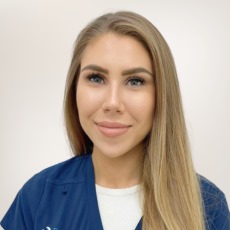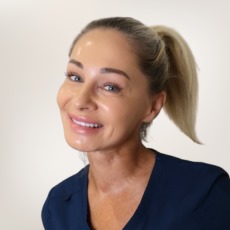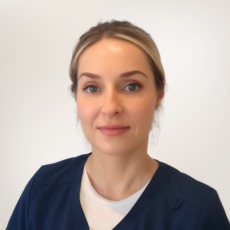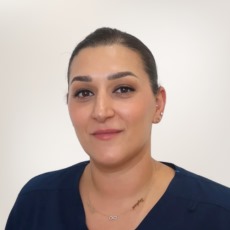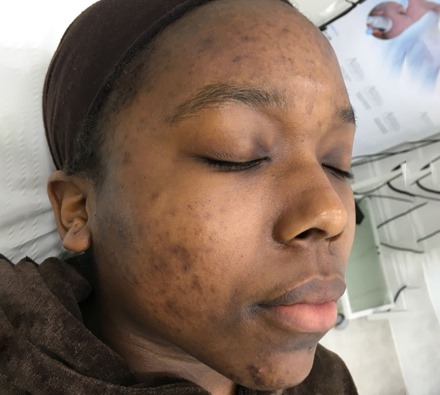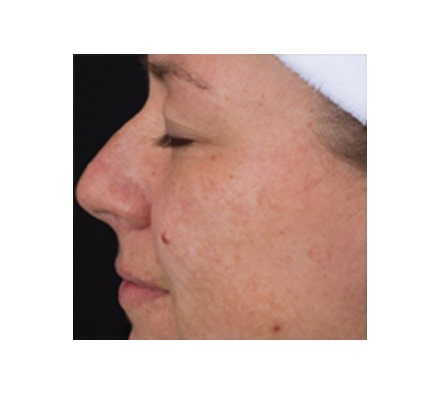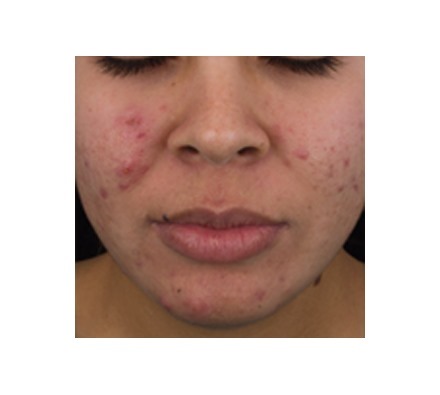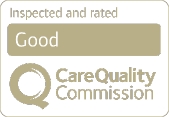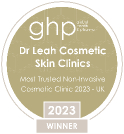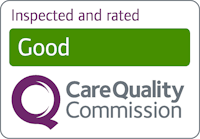Do I need to prepare my skin before having this treatment?
No. This is a superficial, salicylic acid face peel, so generally no skin preparation is required. You can have it on the day of your appointment, irrespective of ethnicity and skin type.
However, if your skin barrier is impaired (dry) then you will need to prepare the skin before your Obagi Blue Radiance Peel. Our skin therapist will be able to provide you with medical skincare products to restore your skin barrier before your peel. These are the same products we recommend you use after your peel: medical moisturiser (£42) and sun protector £28).
Do I need to use aftercare products for a chemical face peel?
Yes. You will need to use a medical moisturiser to assist the shedding of dead skin after your chemical face peel.
You will also need to wear an approved medical SPF following your peel for at least 14 days (although we recommend it long term).
Both products can be provided by Dr Leah Clinics to take with you after treatment. The cost is £42 for the medical moisturiser and £28 for the UVA/UVB sun protector.
What do I need to do before my peel to ensure I get the best results?
• You will usually stop using any active skincare products, e.g. containing retinol, glycolic, other AHA’s or bleaching products, for 3 days prior to your peel
• It is recommended that you have not had sunbed treatment or experienced sunburn or any other form of burn to the face in the 2 weeks prior to your peel
• If your skin barrier is impaired (dry) then you will need to prepare the skin before your Obagi Blue Radiance Peel. Our skin therapist will be able to provide you with medical skincare products to restore your skin barrier before your peel.If you think that this might be the case please contact us so we can arrange for you to start applying these products before you come for your treatment.
What do I need to do or avoid after my face peel?
• You will need to apply both aftercare products recommended by Dr Leah Clinics for at least 14 days after your peel (although we recommend long term use)
• You should avoid sweating, exercising, hot baths and showers for 72 hours after your peel; avoid scrubbing, picking or rubbing the skin for 5 days after your treatment.
• Avoid strong sun exposure e.g sunbathing with face in sun, and tanning beds for at least 14 days after your treatment.
What is an Obagi Blue Peel Radiance peel?
This chemical face peel is a salicylic acid face peel, it also contains other active ingredients such as lactic acid and glycolic acid which work to exfoliate and brighten the complexion. A skin peel is a cosmetic treatment that removes a layer of damaged skin from the face to reveal the newer, healthier layer beneath.
What is in the Obagi Blue Peel Radiance?
Obagi Blue Peel Radiance contains 20% Salicylic Acid, 2% Glycolic Acid and 2% Lactic Acid.
Where on my body can I have an Obagi Blue Peel Radiance?
Face, neck , shoulders, upper back. It is common to require this treatment on neck or shoulders / upper back to treat breakouts and acne scarring.
How many peels will I need?
The number of treatments needed varies depending on the type of peel and the skin concern(s) being treated.
Some clients have the Obagi Blue Radiance Peel as a one-off to freshen the skin or control breakouts. However, as it is a superficial peel you would need a course of 3 to 6 treatments to see dramatic results or treat actual skin conditions. For example, as a chemical peel for acne or chemical peel for hyperpigmentation you would need this number of treatments.
What types of skin peels are there?
Dr Leah Clinics offer 3 different peels. We recommend booking a skin consultation with one of our skin specialists, who will assess your skin care needs and advise which peel is best for you, and whether you need a one-off peel or a course.
Are there any side effects?
Depending on your skin type and home care regimen, a skin peel may cause increased sensitivity.
Side effects may include (but aren’t limited to): stinging, itching, irritation, redness, swelling, tightness, peeling and scabbing of the skin, scarring, post inflammatory hyperpigmentation, hypopigmentation.







